Merry Farmer's Blog, page 10
January 23, 2016
Weekend Excerpt – His Bewildering Bride
The third book in The Brides of Paradise Ranch series is almost here! His Bewildering Bride (spicy version) aka Wendy: The Bewildering Bride (sweet version) was delayed as I wrestled with some vicious cold germs earlier in January, but it should be released by next weekend! But here you go, you can get a sneak peek now….

With a smile on her face, feigning confidence, telling herself she was ready to meet her new life head-on, Wendy took a step forward—
—and was immediately cut off as a man in a dusty suit stepped into the aisle in front of her. His movements were deliberate, and he paid Wendy no regard whatsoever as he turned to reach for his bag. His bulky form blocked her without apology.
“Excuse me, sir.” Wendy fought to keep her impatience in check. “May I walk around you?”
The man took one look at her over his shoulder, curled his lip in a sneer, and barked, “You’ll wait your turn, you uppity darkie.”
Indignation snapped like a whip down Wendy’s spine. She held her back straight and kept her chin up. “Common courtesy would dictate that a gentleman stand aside to let a lady pass.”
The man snorted and yanked his bag from the rack above his seat. “I don’t see any ladies, only a pretentious—”
Wendy’s jaw dropped at the word he called her. The heat of anger flushed her face, but the man had already moved on, charging down the aisle to the train’s door. Wendy waited until the man had stepped down from the car to move. Fury made her dizzy, and disappointment turned her stomach. She’d had such high hopes that things in Haskell, Wyoming would be different.
Ahead, a man with a bushy moustache sent her a sympathetic look as she approached the door. “Sorry, miss,” he mumbled. “We’re not all like that in Haskell.”
“Oh?” Wendy cursed the waver in her voice.
“Nope.” The man held out his hand. “Herb Waters is the name. I own the livery in town. Well, for now. My sister in Denver…” He stopped abruptly and laughed at himself. “My sister tells me I talk too much. I’ll let you get on with things.”
Mr. Waters gestured for Wendy to walk ahead of him down the aisle. If there was one kind man in Haskell, there could be others. Wendy paused before the train car’s door, closed her eyes, and took in a breath. Her mother’s words—said so many times before she passed away—settled over her. “There are good people in this world and bad people. What they look like has nothing to do with it, it’s how they treat their fellow men that means everything.”
She opened her eyes and forced a smile. One rude man was not going to ruin the happiness that waited for her on the platform right outside the train. If her hands were free, she would have smoothed any stray hairs away from her face, checked to be sure her stylish, plumed hat was in place, and adjusted her skirts. As it was, she could only clear her throat and step down onto the train platform.
Uncertainty hit her as soon as her heels clicked on the boards. Haskell was small, but the platform was busy. Mr. Waters zipped out from behind her and rushed off on his own business. Porters and a man in a stationmaster’s uniform worked unloading baggage from the last car on the train. Wagons were parked around the platform, and the passengers that had already disembarked were hugging and greeting friends or family. The rude man who had insulted her was being fawned over by four young ladies in dresses that were fashionable, yet somehow inappropriate for the dusty street. Wendy winced at the sight. Those young ladies would have be ideal customers if she was in a position to continue sewing. Then again, if the man—who, judging by age and the girls’ reactions to him, must have been their father—held the opinion of her that Wendy assumed he did, there was a fair chance they wouldn’t patronize her anyhow.
There were other people scattered about the platform, waiting for passengers or perhaps cargo, but not one of them looked like he could be Cody Montrose. There was a small circle chatting and staring expectantly at the train that consisted of an older woman, a fine gentleman just past his prime, and two young men dressed for work. They squinted at the train’s windows as if looking for something. Wendy wished them well in their search, but kept scanning the platform and the street right below it for her fiancé.
Relief flooded her when she saw him—or at least the only man in sight that looked like he could be for her. He strolled deliberately across the street in front of the platform—a fine, chocolate-skinned man in a suit that must have been purchased from San Francisco. He was clean-shaven and had somehow managed to avoid getting dust on his shoes. As he walked, he took out a gold pocket-watch to check the time. From a distance, Wendy could see how fine the piece was.
“Excuse me,” she called to him, walking quickly to the edge of the platform.
The regal man stopped, searching around him with a confused frown to see who had spoken.
Wendy put on her brightest smile, heart swelling with satisfaction at her future husband. “Excuse me, I’m right here.”
The man turned to her, his expression softening to politeness. “Yes. You are.”
Wendy blinked. Her heart began to shudder in her chest. The man didn’t seem to have an idea who she was. “I’m your bride,” she explained. “From Nashville. Wendy Weatherford.”
The man continued to stare at her. He shrugged and shook his head. “I didn’t send for any brides. I did send for the latest editions of The New York Times and the San Francisco Chronicle. I don’t suppose you have those with you?” His grin was charming, amusing even, but it carried no recognition.
Behind her, she thought she heard someone say, “Wendy Weatherford?”
But before she could react, she was already asking the finely-dressed gentleman, “Aren’t you Cody Montrose?”
The man in front of her burst into laughter so quickly that prickles formed across Wendy’s face, and her hands and feet went numb.
“I’ve been called any number of names in my time, but Cody Montrose has never been one of them.” He continued to chuckle, coming closer to her to offer his hand. “The name’s Solomon Templesmith,” he introduced himself. “And you are?”
She had barely recovered her composure, let alone gathered herself enough to give him an answer, when a man’s voice behind her said, “You’re Wendy Weatherford?”
Dread twisted in Wendy’s gut as she turned to find the older man and woman and the two young working men approaching. It was impossible to tell which one of them had spoken, but it hardly seemed to matter. They all wore variations of the same bewildered stare.
“Yes.” She turned fully toward them, trying to smile but failing in her shock. “I am Wendy Weatherford. And you are?”
All four of them stood stock still, eyes wide.
At last, the woman sighed and said, “I think Mrs. Breashears left out one tiny detail in the description she sent.” More silence, then the woman shook her head and gestured as if she were brushing a fly away from her face. “I’m Mrs. Josephine Evans,” she explained, hand outstretched to take hers.
Wendy half lifted her hand to shake Mrs. Evans’s before realizing both hands were full.
“Here.” The older of of the two younger men hopped forward, his expression serious, though not unkind. “I’ll take those.”
His eyes met hers for a moment as she handed her carpetbag and sewing kit over. A spark of attraction swirled through Wendy’s already fluttering stomach. He had gentle, hazel eyes, and right then they seemed to brim with compassion for her situation. She swayed toward him for a heartbeat, as if he was the lifeline being thrown to her. The older woman still had her hand raised, though, and as soon as her bags were with the kind-eyed man, Wendy took it. She smiled as serenely as she could.
“It’s a pleasure to meet you, Mrs. Evans,” she said. Inch by inch, she recovered her composure and held herself with as much grace as she could in the situation.
Mrs. Evans peeked at her companions, then cleared her throat. “This is Mr. Charlie Garrett.” She introduced the older man.
“Miss Weatherford.” Mr. Garrett bowed as he shook her hand.
“This is Mr. Travis Montrose.” Mrs. Evans gestured to the man who now held Wendy’s things. Her face pinched, her shoulders twitched, and she turned to the other young man. “And this is Mr. Cody Montrose.”
Wendy smiled and faced her fiancé, back straight, hand outstretched in greeting. “Mr. Montrose.”
Cody Montrose stared back at her. His were the only set of eyes that were still rounded in shock and, Wendy was loathe to admit, horror. He’d gone pale, except for bright splotches of red on his cheeks and his mouth hung open. He didn’t take her offered hand.
“Nuh-uh,” he said at last, shaking his head. “I can’t marry her.”
Tension sizzled in the air around them. Wendy’s chest and throat squeezed.
“But,” Mrs. Evans started, hands fidgeting in front of her. “But you sent for her.”
“I didn’t send for her,” Cody said. He gestured to Wendy, sweeping her with a look from head to toe.
Wendy felt as exposed as if he’d shouted for everyone in Haskell to come take a look at her. “I’m sorry if I’m not what you were expecting.” She could only manage a whisper. “You are not what I expected either.”
She twisted to see if Mr. Solomon Templesmith was still witnessing the scene, but that gentleman had moved on and was now talking to Herb Waters, like the two of them were good friends. A shiver of panic curled through Wendy. She was on her own in the middle of nowhere, about to be abandoned.
Oh no! Poor Wendy! What’s going to happen to her? Find out very soon!
January 14, 2016
Rest In Peace
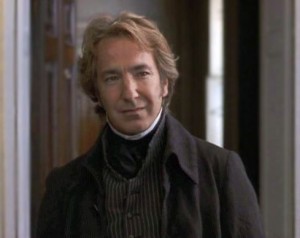 I just heard the news that Alan Rickman has died of cancer. Four days after David Bowie passed away from the same cause. It sucked to hear that Bowie was gone, but when I went to lunch with a good friend on Monday, I foolishly remarked that as sad as it was to lose an icon, I couldn’t think of any celebrities whose death would really crush me. Then Alan Rickman. It was like the universe was sucker-punching me to prove I was wrong. I am deeply sad that Rickman’s light has moved from the earth to the heavens.
I just heard the news that Alan Rickman has died of cancer. Four days after David Bowie passed away from the same cause. It sucked to hear that Bowie was gone, but when I went to lunch with a good friend on Monday, I foolishly remarked that as sad as it was to lose an icon, I couldn’t think of any celebrities whose death would really crush me. Then Alan Rickman. It was like the universe was sucker-punching me to prove I was wrong. I am deeply sad that Rickman’s light has moved from the earth to the heavens.
So why does it bother us so much when beloved celebrities die? It’s not like they were close personal friends. The likelihood of any of us meeting and hanging out with a star is infinitesimal. And yet, when they leave us, it’s like out next door neighbor—the one who got invited to the Christmas party and shared barbeque in the summer and was always there when the baby needed to go to the hospital but someone needed to stay and watch the kids—has died. Why is that?
I once had a voice teacher who summed it up nicely. When someone becomes famous, they gain a sort of magic. That magic is highly attractive to us. We crave it, and we consume it, and it becomes part of us. We need that magic to expand our world and to make it shine. It’s not the celebrity themselves who we come to adore and hold close and think of as part of ourselves, it’s their magic. And it hurts when we feel as though that magic is ripped from us.
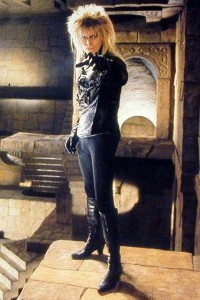 Both David Bowie and Alan Rickman played pivotal roles in my development as a human being. Yep, I, like so many other tweens watching Labyrinth in the 80s, can pinpoint the moment of my sexual awakening by David Bowie’s pants in his role as Jareth, the Goblin King. We giggle about that bulge, but no, seriously, it was a defining moment in my young adolescent life. That’s the kind of power that celebrities have. They are perfect projections for those crucial moments of human development that we all go through. It’s part of their magic, the thing they unknowingly sign on for when they reach for the stars.
Both David Bowie and Alan Rickman played pivotal roles in my development as a human being. Yep, I, like so many other tweens watching Labyrinth in the 80s, can pinpoint the moment of my sexual awakening by David Bowie’s pants in his role as Jareth, the Goblin King. We giggle about that bulge, but no, seriously, it was a defining moment in my young adolescent life. That’s the kind of power that celebrities have. They are perfect projections for those crucial moments of human development that we all go through. It’s part of their magic, the thing they unknowingly sign on for when they reach for the stars.
Similar to David Bowie, the moment Alan Rickman walked on screen in Sense and Sensibility, listening to Marianne playing the pianoforte and singing, stepping into a beam of light and falling in love…in that moment, I knew what true romance was. And I knew that I loved older men. Not only that, Rickman was a major bonding point between me and one of my best friends from high school. Our shared love of his magic drew us together and cemented us as buddies in one of the most difficult times of my entire life. Without the slightest clue who I was, Rickman was there for me when I needed him. He continued to be there through good times and bad.
The loss that we mourn when celebrities who have touched our lives pass on is not so much about the death of a person, it’s the loss and fear of the beautiful and important moments of our lives that they have touched leaving us. It’s the loss of an innocent crush and the fear that we will never recapture the fleeting moments of our own life. I hate to say it, but I experienced the same piercing, bitter sense of fear and loss when the Bill Cosby scandal broke, because he too played an incredibly important role in my early life. His magic was ripped away, but the man himself lives on. For all intents and purposes, he died too, or at least the part of him that mattered to me.
The good news as we mourn is that magic never dies. All of the good and noble and sexy and wonderful things that these stars inspired in us lives on in their legacy and their body of work. And new stars are being born all the time. We will always feel the hole that people like Bowie and Rickman have left in us because we can never go back and reclaim those crucial moments of our own human development that they became the face of. Childhood is gone. But life goes on, love endures, and the world is just waiting for us to add to the brightness of magic.
(screencaps of Sense and Sensibility and Labyrinth used under Fair Use to represent the films being discussed)
January 13, 2016
Western Wednesday – War, War on the Range
 The range wars that took place in Wyoming and other places in the Old West where the cattle industry formed the heart of the economy make for great stories. They’ve been depicted in every format, from books to television to movies. In all of these cases, the drama is high, the stakes are personal, and the action is furious. This is really the stuff of legend. But what really happened back then, and was it as dramatic as the media has made it out to be?
The range wars that took place in Wyoming and other places in the Old West where the cattle industry formed the heart of the economy make for great stories. They’ve been depicted in every format, from books to television to movies. In all of these cases, the drama is high, the stakes are personal, and the action is furious. This is really the stuff of legend. But what really happened back then, and was it as dramatic as the media has made it out to be?
There were several conflicts that could be classified as range wars throughout the 1870s, 80s, and 90s—from the Mason County War in Texas in 1875 to the Colfax County War in New Mexico in the 70s and 80s. Most of these conflicts were simply the result of new, entrepreneurial settlers trying to cut in on the business of ranchers and landowners who were already established in any given area. They turned violent due to lack of law enforcement to stop intimidation and retaliation before it got out of hand. But the big war, the one that gets the most press and that the movies, shows, and books are all based on, is the Johnson County War in Wyoming from around 1889 to 1893.
Although a lot of the media out there likes to paint the Johnson County War as a class war where the little guy was just standing up for his rights against the big, bad cattle barons, it’s so not that simple. The origins of the conflict were the same as any other range war—newbies trying to carve out a piece of the pie for themselves against the long-standing, well-organized ranchers who had come before them.
One theory about the instigating factor of the war is the weather. Yup. The cattle industry in Wyoming was booming in the 1870s and early 80s, and there was enough business to go around. But in the winter of 1886-87, Wyoming saw several blizzards and temperatures that dropped to 40-50 below zero. That was then followed by an unusually hot and dry summer. It decimated the herds. And while you might think that this would be great for ranchers because there would be a higher demand for fewer heads of cattle, the fact was that with cattle still grazing out on the open range—and fewer of them at that—rustling became a major problem.
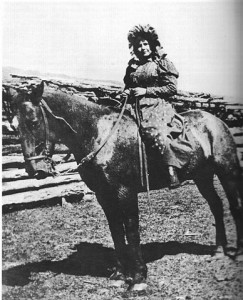
Ella Averell, early victim of the Johnson County War
A lot of the rustling (taking cattle off the open range and claiming they’re yours when clearly, according to the brand, they’re not) was blamed on the smaller, newer ranchers. Some of that was justified. Some of the rustling was done by independent gangs of criminals. The larger ranchers weren’t going to take this lying down, though, and it just so happened that they were organized.
I’ve had fun mentioning in my Brides of Paradise Ranch series that both of the cattle barons in Haskell, Wyoming—Howard Haskell and Rex Bonneville—belong to the Wyoming Stock Growers Association. No single organization was as important or powerful in Wyoming in the late 19th century as the WSGA…and that includes the government. When the problems started, the WSGA took action. Not only were there powerful cattlemen in their ranks, there were also politicians, independent enforcers, and detectives.
When the rustling got bad, the WSGA sent out teams of detectives and hired guns to find out what was going on. Their conclusion in many cases was that the smaller ranchers were to blame for the rustling. To make a long story short, they took action.
Perhaps one reason why the Johnson County War spun out of control so fast was because of the first people who were killed. A range detective out investigating rustling came to the conclusion that a man named Jim Averell was guilty. So he and his team lynched him in July of 1889. They also lynched his wife, Ella. It’s one of the few times that a woman was lynched in the Old West, and it caused an outrage. Not only an outrage, it prompted revenge. A few months later, some of the men who had been involved in the lynching were murdered in retaliation.
That spark ignited a firestorm. The WSGA responded by hiring guns from Texas—who were reported to be ruthless killers—and sent more detectives out to “investigate.” One of the reasons the war earned its place in history is because they also sent out journalists to record what was going on and to send word—or rather, copy that would sell papers—back East. The smaller ranchers refused to be put down. They attempted to organize and fight back. Like, literally fight back.
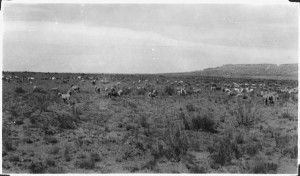 Over the next few years, there were a series of sieges and armed conflicts. More often than not, they involved smaller ranchers and their allies attacking the cattle barons, and then the WSGA retaliating by sieging ranches and killing the participants. The small ranchers saw themselves as fighters for the cause of the little guy. The cattle barons saw them as vigilantes disrupting the economy. They saw themselves as protectors of the economic interests of the state and of their own businesses by whatever means necessary. Both sides thought they were right, and both were willing to fight to the death to win.
Over the next few years, there were a series of sieges and armed conflicts. More often than not, they involved smaller ranchers and their allies attacking the cattle barons, and then the WSGA retaliating by sieging ranches and killing the participants. The small ranchers saw themselves as fighters for the cause of the little guy. The cattle barons saw them as vigilantes disrupting the economy. They saw themselves as protectors of the economic interests of the state and of their own businesses by whatever means necessary. Both sides thought they were right, and both were willing to fight to the death to win.
So what ended up ending the Johnson County War? How could a conflict with two sides who were so convinced they were right and who were willing to do whatever it took to protect their interests stop?
Well, the answer is that President Benjamin Harrison himself had had enough of it. In 1892, he charged the Secretary of War with ending the conflict. The U.S. Army moved in to Wyoming and slapped some serious down. The men from the WSGA who were responsible for the killings of the smaller ranchers and vigilantes were charged with crimes…but never actually prosecuted or convicted of anything.
The end result was that the cattle barons kept their power and the smaller ranchers lost theirs. Unfair? Eh, maybe. We like to hear about the little guys winning, but in a way, the little guys just lost in their attempt to move in on territory that was already claimed by men who had been in business longer than them. Before long, there were other problems taking up the cattle baron’s time and attention—changes in the market, shifting demand for beef, and new laws that changed the way ranches were organized. The war might be the thing that captures our imagination, but as is the case so often in life, it was ultimately the slow-moving glacier of economic change and development that shaped the new Old West.
(all images are public domain, courtesy of WikiCommons)
January 10, 2016
Release Day! His Dangerous Bride/Eden: The Dangerous Bride
It’s time! It’s here! Although technically tomorrow is release day, I’ll let you in on a secret… The books are live on most platforms right now! And, you guessed it, both are available for an introductory price of 99 cents for a VERY limited time only! Grab ’em cheap while you can! So are you ready for some adventure with Luke and Eden? Here’s a taste of His Dangerous Bride (spicy version) aka Eden: The Dangerous Bride (sweet version):
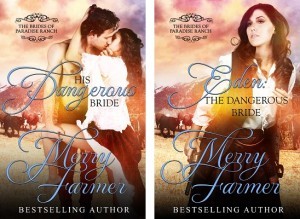
“Miss Eden Gardner?”
Eden spun as her name was called. Right away, she spotted a distinguished gentlemen in an expensive suit, a gold watch fob glistening across his waistcoat, and an attractive older woman in sensible but stylish cotton.
“Miss Eden Gardner,” the woman said, a statement this time instead of a question. She picked up her pace, coming forward with outstretched hands. “I’m Mrs. Josephine Evans, and you have no idea how overjoyed I am to welcome you to Haskell.”
“She took the words right out of my mouth,” the gentleman said. He came to a stop in front of her and touched the brim of his hat before taking her hand in a firm shake. “Charlie Garrett, at your service.”
“It’s a pleasure to meet both of you.” She wasn’t even lying at that. Her shoulders relaxed and her back stopped aching. It was because of these two, and Mrs. Piedmont, that she was getting this one-in-a-million chance to start over.
As soon as she let go of Mr. Garrett’s hand, she searched behind him, scanning the area around the station. “Where’s my husband?”
Mrs. Evans’s brow shot up. Mr. Garrett sputtered, then burst into a hearty laugh. “No beating around the bush with you, I guess.”
Eden crossed her arms and smiled at him. Handsome, tail end of his prime. Confident, competent, and likely able to take her down before she knew what was happening. Yes, she liked Charlie Garrett at first sight.
“I never saw much point in beating around any bushes,” she told him and Mrs. Evans. “It’s a waste of time when seconds matter.”
“Is that so?” Mr. Garrett’s lips twitched as he worked to get his grin under control. His eyes held experience, understanding, knowing. She’d have to watch out for him.
A slow but equally satisfied grin spread across Mrs. Evans’s face. “Oh yes,” she said, rubbing her hands together as though relishing a prize. “She’ll be perfect. Luke won’t know what hit him.”
Damn. By the sound of things, Eden would get along with Mrs. Evans like they were two peas in a pod. And if what Mrs. Breashears had said was right, Mrs. Evans was Luke Chance’s adopted mother, which meant she’d be Eden’s mother-in-law. Haskell was growing on her already.
“I’m here, I’m here!” a call came from the row of hitching posts to one side of the train. “Sorry I’m late.”
Mr. Garrett and Mrs. Evans turned, and Eden leaned to the side, arms still crossed, to get a look at the man who was climbing down from a handsome chestnut gelding. He moved with the horse as though the two of them had one mind, looping the reins around the post with hardly a glance. When he turned in Eden’s direction, her heart stuttered in her chest.
“Well, hello,” she hummed.
The man strode forward with wide, sure steps. Cocky steps. The kind of steps that said he could handle any situation and keep smiling while doing so. His shoulders were broad, his arms strong under sleeves rolled up past his elbow. A hint of dark blond hair was visible under the brim of his worn hat, and straight, white teeth flashed as he smiled. He hopped up onto the platform with ease. Eden had half a mind to ask him to turn around so she could get a look at his backside.
“Are you Eden Gardner?” he asked, striding to a stop between Mr. Garrett and Mrs. Evans. He raked her from head to toe with a fiery gaze that said he liked what he saw.
Hot damn.
“That’s me.” She stepped toward him, holding out a hand.
He took it, his grip firm and warm. “Luke Chance. Pleased to meet you.”
His confidence, his strength, that hint of mischief in his eyes as he smiled at her—yep, she could have done much worse in a man. Now all she needed to do was make sure he sealed the deal before he saw right through her and called it all off.
“All right.” She looked at Mr. Garrett, then Mrs. Evans. “He seems like he’s got all the right parts in all the right places. I’ll marry him.” She nodded. The faster the better.
Like I said, His Dangerous Bride and Eden: The Dangerous Bride are live on most retailer platforms right now. And remember, they’re only 99 cents for a VERY limited time!
Click here to be taken to Eden: The Dangerous Bride on Amazon and Kindle Unlimited.
Click here to be taken to His Dangerous Bride on Amazon.
Click here to be taken to His Dangerous Bride on iBooks.
Nook link coming soon.
Kobo link coming soon.
January 6, 2016
Western Wednesday – Closing the Open Range

The Open Range
Last week we talked a bit about how cattle got to the West, and how they were maintained and then driven to railheads and eventually on to market (the part we don’t like to think about when we’re enjoying a juicy burger). Obviously, letting cattle graze freely over vast tracts of public land couldn’t last forever. So what changed things and how?
The quick and dirty answer to what changed things is “barbed wire.” But of course, it’s not as simple as that. It is, however, pretty amazing that one little invention could change the course of history and cause a lot of trouble, adding to the reasons it was called the Wild West.
Let’s start with those cattle. The West began to be settled in the 1840s and 50s. During that time, you had an incredibly large amount of land inhabited by an incredibly small amount of people. Neighbors were not something you had to worry about. As the cattle industry began in places like Wyoming, where my Brides of Paradise Ranch series is set, there was more than enough forage and water sources for everyone to let their cattle roam free across the land.
(Of course, this is all from the perspective of white settlers. It was an entirely different story for the Native American tribes who were systematically having their homeland taken from them, but that’s a post for another day.)
All that began to change as more and more people moved West to settle. The most serious problems and resulting conflicts developed when small ranches and individual settlers attempted to put down roots next to the huge ranches run by men of wealth and influence. Simply put, once the West reached the tipping point of number of settlers, all that vast open land and all those easy water sources couldn’t supply everyone who wanted to use them.
The result was that, by the mid-1880s, large ranchers were doing everything they could to drive the smaller ranchers out of business. That included hiring thugs to attack, and in some cases, lynch competing outfits. The Range Wars of the Old West have gone down in legend—sometimes exaggerated, but sometimes not. They were competition taken to the extreme.
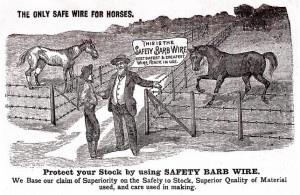
Early advertisement for barbed wire
And one quiet player in the conflict that led to these wars had to do with the invention and implementation of barbed wire fences. Because as soon as barbed wire was invented in the 1870s, it became less expensive to fence in vast tracts of grazing land and accompanying water sources so that a rancher could keep their herd separate from their neighbors’. Only, the problem was that a great deal of the land that was being fenced in was public land.
Back in the earlier days of the West (up to around the 1870s), various Homesteader Acts meant that if you went West and claimed property and made improvements, it was yours. As that land disappeared, however, ownership of the land wasn’t so cut and dry. So when ranchers began building barbed wire fences to enclose their herds, as often as not, they’d fence in land that they didn’t technically own, regardless of whether other livestock needed to use it, the post office needed to get through, or other official institutions had claim to it. And especially regardless of whether a smaller rancher or independent farmer happened to have built their homestead on that land.
Add to that already volatile mix the fact that, in Wyoming at least, an organization of the wealthiest and most powerful ranchers, the Wyoming Stock Grower’s Association (which I mention in His Perfect Bride that Howard Haskell and Rex Bonneville both belong to, although Rex is more involved with them) had so much power that they basically controlled the government of Wyoming. A lot of nasty things went down while officials turned a blind eye. None of it was exactly fair.
Next week, we’ll take a look at some of the range wars that gave the West it’s adjective of Wild.
(images are public domain, courtesy of Wikicommons)
January 4, 2016
Covers: The Good, The Bad, and The Ugly

image courtesy of goXunuReviews via flickr commons
Okay, covers. It’s about time we had a little talk. Study after study has shown that the most important things to sell a book (particularly if you’re an Indie author) are your blurb (which we talked about here) and your cover. So many times, if a book isn’t selling well, there’s a good chance your cover just isn’t hacking it. And there are several reasons for this. So here we go.
If I could only say one thing to people about choosing the best cover for your book (a book you’ve worked too long and hard on to send it out into the world dressed badly) it’s this:
DO NOT EVER DESIGN YOUR OWN COVER
I can’t say that loud or frequently enough. (I know not everyone agrees with that, but I’m pretty passionate about it) Even if you think you’re a fantastic designer and are super capable when it comes to working with Photoshop or other graphic design programs. Just don’t do it. Just like you shouldn’t edit your own work because you’re too close to it to have a non-partial eye, you shouldn’t design your own covers because you aren’t going to be able to see the flaws in your work. Don’t go out that door with broccoli in your teeth!
Second, not all cover designers are equal. I know you love you sister’s daughter’s boyfriend’s brother who is really good with computers, but just because he knows how to cut and paste does not mean he has a designer’s eye or that he knows what images draw readers to certain genres of books. Book covers have their own language, their own symbolism, and it’s constantly changing. You need someone with an artistic eye, but also someone who knows what’s trending, knows how to blend light and shadow, and knows how to create vibrant, original images that pop and draw a reader’s eye. Talent does not come as an accessory to graphic design programs, and a designer who is talented at designing stationary, for example, may not be talented when it comes to book covers.
So let’s take a look at some things you should watch out for in cover design world.
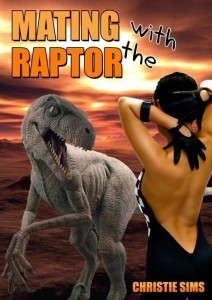 First and foremost, readers are savvy these days. Unless you’re writing something deliberately tongue-in-cheek or trashy (like Mating with the Raptor), readers will click right past any covers that look Photoshopped. What does that mean? Anything that looks like the designer took a background and started randomly pasting stickers on it looks bad, Bad, BAD. You can tell one of these amateur covers a mile away because the light levels don’t match. Look for shadows that are going in the wrong direction, images that are disproportionate in size to other elements of the cover, figures or pieces of the image that appear to have more or less light on them. For example, in this delightful cover, the girl has a relatively bright, warm light illuminating her, but it doesn’t match the darker, shadowy light of the background. Same goes for the dino, which is in a cooler light. I used this example cover because I don’t think the designer cares how realistic and smooth it looks, but flip through Amazon for a while, and you’ll find covers where the designer just didn’t know what they were doing.
First and foremost, readers are savvy these days. Unless you’re writing something deliberately tongue-in-cheek or trashy (like Mating with the Raptor), readers will click right past any covers that look Photoshopped. What does that mean? Anything that looks like the designer took a background and started randomly pasting stickers on it looks bad, Bad, BAD. You can tell one of these amateur covers a mile away because the light levels don’t match. Look for shadows that are going in the wrong direction, images that are disproportionate in size to other elements of the cover, figures or pieces of the image that appear to have more or less light on them. For example, in this delightful cover, the girl has a relatively bright, warm light illuminating her, but it doesn’t match the darker, shadowy light of the background. Same goes for the dino, which is in a cooler light. I used this example cover because I don’t think the designer cares how realistic and smooth it looks, but flip through Amazon for a while, and you’ll find covers where the designer just didn’t know what they were doing.
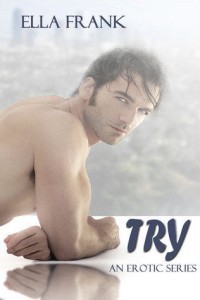 I could find you a ton of examples of covers that look Photoshopped. You know what I mean. Also look out for lines that are too sharp around elements of the design, or that are too fuzzy because they’ve been blended with a particular tool. Anything that looks like stickers should send you running for the hills. Also, this guy on the right. Bless his heart, I don’t know who he is, but I’m not gonna lie—when I see him on a cover, I automatically pass on the book. Dude is everywhere!
I could find you a ton of examples of covers that look Photoshopped. You know what I mean. Also look out for lines that are too sharp around elements of the design, or that are too fuzzy because they’ve been blended with a particular tool. Anything that looks like stickers should send you running for the hills. Also, this guy on the right. Bless his heart, I don’t know who he is, but I’m not gonna lie—when I see him on a cover, I automatically pass on the book. Dude is everywhere!
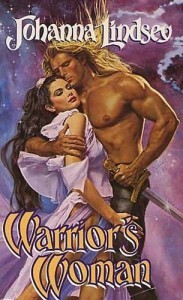 Another problem I’ve seen in some covers these days is that they look dated. Ah yes, remember the good old Fabio-style cover? It’s just not the thing right now. These sorts of clinch photos with tons of wind and clothes about to fall off were all the rage a few years ago, but not so much now. Take a look online at the bestselling romance covers today (for example, if that’s your genre). We’re in the era of the heroine with the big skirt that takes up half the cover right now. There’s also variation in covers depending on the level of sweetness that the story entails. If you’re writing a Christian romance, for example, you don’t want this Fabio-style cover. It doesn’t send the right message. (All right, I’ll admit that my latest book cover for His Perfect Bride has shades of this era, but note the key differences: my cover isn’t an illustration, and the heroine is fully dressed, in spite of the hero’s shirtless good hair day.)
Another problem I’ve seen in some covers these days is that they look dated. Ah yes, remember the good old Fabio-style cover? It’s just not the thing right now. These sorts of clinch photos with tons of wind and clothes about to fall off were all the rage a few years ago, but not so much now. Take a look online at the bestselling romance covers today (for example, if that’s your genre). We’re in the era of the heroine with the big skirt that takes up half the cover right now. There’s also variation in covers depending on the level of sweetness that the story entails. If you’re writing a Christian romance, for example, you don’t want this Fabio-style cover. It doesn’t send the right message. (All right, I’ll admit that my latest book cover for His Perfect Bride has shades of this era, but note the key differences: my cover isn’t an illustration, and the heroine is fully dressed, in spite of the hero’s shirtless good hair day.)
Okay, so what looks good on a cover? And how do you get a truly stellar cover design, especially for historical books, when there’s an extremely limited amount of historical stock photography out there?
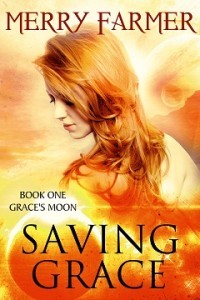 Well, great book covers have all the design elements in harmony with each other. Truly stellar designers know how to put color and light and background ambiance to work for them. This cover of mine from Saving Grace, by designer Kalen O’Donnell was nominated for a cover design award last year. Frankly, that book sucked (well, it didn’t suck, but it wasn’t as good as I wanted it to be, which is why I stopped writing sci-fi), but man, based on that cover, you’d give the blurb a look, wouldn’t you? The color, the light levels, the visual impact are all stunning. And that started with a very simple stock photo.
Well, great book covers have all the design elements in harmony with each other. Truly stellar designers know how to put color and light and background ambiance to work for them. This cover of mine from Saving Grace, by designer Kalen O’Donnell was nominated for a cover design award last year. Frankly, that book sucked (well, it didn’t suck, but it wasn’t as good as I wanted it to be, which is why I stopped writing sci-fi), but man, based on that cover, you’d give the blurb a look, wouldn’t you? The color, the light levels, the visual impact are all stunning. And that started with a very simple stock photo.
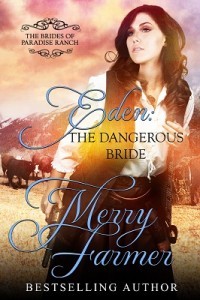 As for the problem of there not being enough original images out there, well, one of the reasons I hire the immensely talented Erin Dameron-Hill to do my covers is because she’s so good that she can dissect images and create new models from various parts! This truly awesome cover, she tells me, is actually three different images combined to make an original image. And as you can clearly see, the foreground blends with the background, the color scheme matches the rest of the novels in the series (peek over to the right), and there is no sticker-ness anywhere.
As for the problem of there not being enough original images out there, well, one of the reasons I hire the immensely talented Erin Dameron-Hill to do my covers is because she’s so good that she can dissect images and create new models from various parts! This truly awesome cover, she tells me, is actually three different images combined to make an original image. And as you can clearly see, the foreground blends with the background, the color scheme matches the rest of the novels in the series (peek over to the right), and there is no sticker-ness anywhere.
At the end of the day, “good” and “bad” is subjective, but only up to a point. There are standards, and if you’re in this business to win it, you’ll want to find the highest quality designs that you can. The good news is that covers aren’t super expensive these days. You can get good ones for under $100! And so, I leave you with a pretty amazing list of cover designers, shared with me by author Christine Miller:
LIST OF RECOMMENDED COVER DESIGNERS
99-DESIGNS http://99designs.com/book-cover-design
ALCHEMY BOOK COVERS http://www.alchemybookcovers.com/
AM DESIGN STUDIOS http://amdesignstudios.net/sample-page/
ART BY KARRI http://artbykarri.com
AUTHOR MARKETING CLUB http://authormarketingclub.com/members/pre-made-book-covers/
AVALON GRAPHICS http://www.avalongraphics.org/books.html
BEYOND DESIGN http://www.tamianwood.com
THE BOOK COVER DESIGNER http://thebookcoverdesigner.com/shop/?vendor=jesrdesign
BOOK COVERS GALORE http://bookcoversgalore.com/
BOOK COVERS MARKET http://bookcoversmarket.com
BOOKS DESIGN http://www.books-design.com/
BOOKFLY DESIGN http://www.bookflydesign.com/
BOOK GRAPHICS http://bookgraphics.net/
CANDESCENT PRESS http://www.candescentpress.com/coverdesign.php
CAROL’S COVER DESIGN http://carolcoversdesign.com/
CHARISMA KNIGHT http://designsbycharisma.yolasite.com/book-covers.php
CHIP KIDD http://www.chipkidd.com/gallery.html
COVERS BY ALDELM JOHN FERRIOLS http://www.coroflot.com/Maggs/Book-Covers
THE COVER COUNTS http://thecovercounts.com/
CREATION WARRIOR http://www.creationwarrior.net/
CREATIV INDIE COVERS http://bookcovers.creativindie.com
CUSTOM INDIE COVERS http://www.customindiecovers.com/
DAFEENAH JAMEEL http://dafeenah.deviantart.com/gallery/
DAMONZA http://damonza.com
THE DARK RAYNE http://www.thedarkrayne.com/book-covers/
DIGITAL DONNA http://digitaldonna.com
EBOOK COVER DESIGNS http://www.ebook-coverdesigns.com
EBOOK INDIE COVERS http://ebookindiecovers.com
EBOOK SERVICES https://ebookcovers4u.wordpress.com/cat…/covers-weve-made/
EL DESIGNS http://www.eldesigns.net/index.html
ESTRELLA COVER ART http://estrellacoverart.com/
EXTENDED IMAGERY http://www.extendedimagery.com
FANTASIA FROG DESIGNS http://fantasiafrogdesigns.wordpress.com/premade-bookcovers/
FICTION BOOK COVER http://fictionbookcover.com/
FLIP CITY AUTHOR SERVICES http://flipcitybooks.com
FOR THE MUSE DESIGN (Pre-Mades) http://www.forthemusedesign.com/pre-made-covers.html
FOSTER COVERS http://www.fostercovers.com
FOSTERING SUCCESS http://www.fostering-success.com/autho…/ebook-cover-design
GO ON WRITE http://www.goonwrite.com
GRAPHICZ X DESIGNS http://graphiczxdesigns.zenfolio.com
HARPER DESIGN http://louharper.com/Design.html
HUMBLE NATIONS http://humblenations.com
I DREW DESIGN (FIVERR) https://www.fiverr.com/idrewdesign
INDIE AUTHOR SERVICES http://www.indieauthorservices.com/pre-made-book-covers.html
JAMES LEDGER CONCEPTS http://www.jamesledgerconcepts.com
JANET HOLMES http://www.seejanetwork.com/
JH ILLUSTRATION https://jhillustration.wordpress.com
JOE SIMMONS ILLUSTRATION http://www.jsimmonsillustration.com
KATIE W. STEWART http://www.katiewstewart.com/cover-designs.html
KILLER COVERS http://killercovers.com/#ebook
***THE KILLION GROUP http://thekilliongroupinc.com
KIT FOSTER DESIGN http://www.kitfosterdesign.com/Home.aspx
LEAH KAYE SUTTLE http://www.leahsuttle.com
LFD DESIGNS http://mycoverart.com/
LITTERA DESIGNS http://www.litteradesigns.com
LLPIX PHOTOGRAPHY & DESIGN http://www.llpix.com
MARIYA KRUSHEVA http://mishka19.deviantart.com/gallery/33572981?offset=0
MELCHELLE DESIGNS http://melchelledesigns.com
NESS GRAPHICA http://www.nessgraphica.com/
NINJA MEL DESIGNS http://www.ninjameldesigns.com/portfolio/
PHAT PUPPY ART http://phatpuppyart.com
PERMED EBOOK COVER SHOP http://www.premadeebookcovershop.com/
Q42 GRAPHIC DESIGN http://www.q42graphicdesign.com
REBECCA SWIFT ARTWORK http://www.rebeccaswiftartwork.com
ROBIN LUDWIG DESIGN http://gobookcoverdesign.com/pages/book_cover_design.html
ROCKING BOOK COVERS http://www.rockingbookcovers.com
RROXX (FIVERR) https://www.fiverr.com/…/create-awesome-professional…
SARAH JANELEHOUX http://sarah-janelehoux.com/coverart.htm
SCARLETT RUGERS BOOK DESIGN AGENCY http://booksat.scarlettrugers.com
SCRIBBLELEAF http://www.scribbleleaf.com
SELF PUB BOOK COVERS http://www.selfpubbookcovers.com/
SHAYNE HELLERMAN http://shaynehellerman.deviantart.com/gallery/
STREETLIGHT GRAPHICS http://streetlightgraphics.com
STEFAN LINDBLAD http://www.canvas.nu/illustration-bokomslag-eng.htm
SWEET ’N SPICY DESIGNS http://jayceedelorenzo.com/sweetnspicy/
TUGBOAT DESIGN http://www.tugboatdesign.net
YOCLA DESIGNS http://yocladesigns.com/
WALKING STICK BOOKS http://www.walkingstickbooks.com/…/Ser…/Cover-Design.cfm
WICKED SMART DESIGNS http://www.wickedsmartdesigns.com
WINTER HEART DESIGN http://winterheart.com/category/covers
WORD SUGAR DESIGNS http://www.wordsugardesigns.com/
There you go. So now you can’t tell me you can’t find a good cover designer. 
January 2, 2016
Weekend Excerpt – His Dangerous Bride/Eden: The Dangerous Bride
Happy New Year everybody! I hope you rang in 2016 in style. I’ll admit, I spent both New Year’s Eve and part of New Year’s Day working. Why? So I could bring you the next book in The Brides of Paradise Ranch series, of course! So here’s a little snippet from Chapter One of His Dangerous Bride (spicy), aka Eden: The Dangerous Bride (sweet), coming to you January 11th!

“What happened to you?” Muriel balked when he burst through the kitchen door.
“Saloon fight. Is Ma home?” he rushed on without further explanation.
Muriel gaped and sputtered, but Luke was already at the door leading to the hall and on to the front parlor when she called, “She and Mrs. Piedmont are having morning tea in the front room.”
Luke marched down the hall and into the parlor, where, sure enough, Josephine and Virginia leaned toward each other over a fancy tea set, like two gossiping schoolgirls.
“Ma, I want you to find me a wife,” Luke announced, planting his hands on his hips and smiling with all the confidence of a conquering hero.
Josephine and Virginia snapped straight, brows shooting to their hairlines, and turned to gape at him.
A moment later, their expressions transformed into sly smiles of triumph that were anything but surprised. The grin slipped from Luke’s face, and dread pooled in his gut. Maybe he’d been a bit hasty in this decision.
“I knew you’d come around sooner or later,” Josephine said. She stood and swept across the room to Luke, Virginia right behind her. “I’ve been hoping, and more importantly, planning, for this day for months.”
“Yes,” Virginia added as the two of them pushed him toward a flowery sofa against one wall and nudged him to sit. “Mrs. Breashears has sent us profiles of all of the young women at Hurst Home, and we’ve been pouring over them since then, working out exactly which girl would be right for you.”
“You…have?” This might have been a good time for him to run after all.
“Of course, my boy,” Josephine said. “I love you dearly, and I want nothing but the greatest joy for you. And as we all know, the greatest joy comes from a happy and successful marriage to a woman who suits your temperament in every—good heavens, Luke, what happened to your face?”
Josephine’s expression hardened to something midway between alarm and anger. She reached out and touched her fingertips to his swollen, purple eye.
“You’re just noticing my shiner now?” Luke flinched away from her.
“You finally asked me to find you a bride. What else was I supposed to think about?” Josephine’s tone turned scolding.
“Land sakes, Luke. You were in that stupid saloon fight last night, weren’t you?” Virginia sighed crossed her arms. “Almost all of Howard’s ranch hands and a few of mine were involved. Picked a fight with Bonneville’s men, or so I hear.”
“We did not pick that fight,” Luke growled. “They started it with that lousy, crooked deal Bonneville worked out with Dashiell’s Stockyard.”
“And you decided to take it to the next level, I suppose?” Josephine pursed her lips.
“We couldn’t just let them gloat like they were.” It wasn’t much of an excuse, and both women hummed and clucked over it.
“In light of this mess, I think I’d pick Eden Gardner over Talia Lambert,” Virginia said.
Josephine leaned back, nodding at Luke and humming her assent. “Definitely Eden. Talia seems like such a sweet, sunny girl, but I think you’re right about Luke needing a firmer hand after all.”
“A firmer hand?” Luke scowled, leaping off the sofa to pace the room. “What’s this about a firmer hand? I’m a man, Ma, not some snotty kid.” He puffed up his chest and stood tall to prove the point. If only his side wasn’t so sure and his left eye could open all the way.
“Come now, son, you’ll like Eden Gardner.” Josephine smiled and patted the spot on the sofa where Luke had been sitting. “The report Mrs. Breashears sent indicates that she’s sharp, quick-witted, and tough. Apparently, she’s at Hurst Home because there was some trouble with her family. Mrs. Breashears isn’t specific, but it sounds like they abandoned her.”
“Abandoned her?” Luke’s shoulders dropped from their tight bunch. Long-dormant emotion from those painful days when his sour old grandfather had dumped him and his siblings at the orphanage door and walked off, two days after his parents succumbed to fever, flared. He rubbed the back of his neck. “Is…is she pretty?”
Josephine and Virginia shared a grin. “Mrs. Breashears doesn’t make judgements about the girls’ appearances in her reports, but she does say that Eden has dark hair, brown eyes, and freckles.”
“Freckles?” Luke’s mind conjured an image of a girl of no more than fifteen bearing a face full of freckles, a shy smile, and eyes glowing with adoration. Well, he wasn’t so keen on a girl that young, but the adoration and the face he could take. He nodded in consideration, then said. “All right. Sounds good. How soon can she get here?”
Josephine laughed. “In a hurry, son?”
“Yep,” Luke answered before he could think better of it. He inched sideways to the tea table, searching for pastries. He hadn’t eaten that morning, after all. “The cattle drive is only a month away, and Franklin will need to make a decision before that.”
“Cattle drive?” Josephine asked.
“Franklin?” Virginia echoed.
Luke selected a warm muffin from a plate on the table, took a bite, and said while chewing, “I asked Franklin to let me lead the cattle drive to Culpepper. He said he needed proof that I was stable and responsible. That’s why I’m here.”
“Ah,” the two older women said in unison.
Josephine cleared her throat, lips twitching as though she was trying not to giggle. “I’ll telegraph Mrs. Breashears this afternoon to see what we can arrange.”
“If she’s willing, I’m certain Eden could be here by the end of the month,” Virginia added. “It doesn’t take that long to journey from Nashville to Haskell.”
“Good.” Luke stuffed the rest of the muffin in his mouth. “I’m pleased.”
Still, Josephine and Virginia tried not to laugh.
“In the meantime, you’d best clean yourself up and think about the qualities a sober and mature husband should have,” Josephine said. “I’m sure Pete would be more than happy to let you know what you should expect in your new role as husband.”
“I think I can manage that on my own, Ma.” Luke winked and started for the door. “I’m no spring chicken.”
The two older women giggled and snickered. Luke paused as he reached the door and turned to them with a scowl.
“What?” he demanded.
“Nothing, nothing.” Virginia held up a hand to hide her grinning mouth.
“It’s just that you may want to consider that married life is not what you’re thinking it is,” Josephine added.
“Ma. I’m twenty-seven years old. I’ve heard all about Bonnie’s business,” he admitted, though his cheeks flared red as he did. “I know what goes on in a marriage.”
Virginia burst out in snorting chuckles.
“If you say so, my dear.” Josephine’s lips twitched as she gave him a downright patronizing look. “If you say so.”
So there you have it! Intrigued? His Dangerous Bride and Eden: The Dangerous Bride release on Monday, January 11th. If you haven’t read His Perfect Bride, aka Corva: The Perfect Bride yet, well, they’re not essential for understanding book 2, but they sure are fun! Pick up a copy today!
December 30, 2015
Western Wednesday – Home, Home on the Range
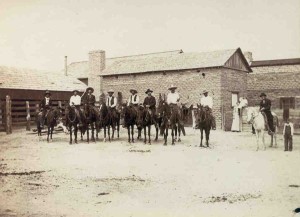
Vaqueros, or Mexican cowboys
One of the most iconic aspects of life in the Old West, something that plays a prominent role in my new series, The Brides of Paradise Ranch, is the whole idea of the ranch itself. When settlers first poured out West as the various trails, and later the railroad, opened things up, many of them thought about farming the rich land or mining for gold or silver. It wasn’t until slightly later that someone looked around and said, “You know what? We could raise livestock here.”
Okay, so right about now I bet you’re wondering… How did cows get to the Old West? The short, stupid answer is “Just like everybody else.” Livestock was originally brought over by settlers from Europe. Not just English settlers in the original colonies, though. Quite a few cattle were brought over to Mexico by Spanish settlers. In fact, the whole cowboy, cattle drive industry that we think of today when we think of the Old West really started in Texas around the time of the Civil War. And if you remember, “around the time of the Civil War” is not all that long after the Mexican-American War ended in 1848. Mexican rancheros had been raising longhorn cattle in the area for quite some time.
The interesting thing to me is that by 1861, with Texas now part of the United States, there was actually a huge surplus of longhorn cattle. Beef was incredibly popular back East, but the problem was getting it there from the remote, railroadless ranches of Texas. A clever, forward-thinking man by the name of James McCoy realized that shipping cattle by rail back east would send profits through the roof. McCoy began buying up land around the village of Abilene, Kansas where the railroad already ran. He built up the area and made it more than just a sleepy frontier town, he made it a destination. All, of course, designed so cattle could be driven from the ranches in Texas to the railhead in Abilene, enabling McCoy and other enterprising ranchers to make money hand over fist.

This great diagram of how to drive cattle proved very useful in writing His Dangerous Bride!
And so, the iconic cattle drive was born. I once had someone tell me that the term “cowboy” wasn’t actually in use in the 19th century, but as far as I have been able to tell from my research, it actually was. But so were the words “cow-poke” and “cow-hand.” Whatever the term, cowboys were, in a way, like glorified shepherds. They were hired to mind the vast herds of cattle that lived out on the Open Range and were owned by specific ranchers. The advantage of the Open Range was that cattle were mostly allowed to just roam free, with little maintenance or interference by ranchers. Cowboys would keep the cattle from getting entirely lost, and once a year, usually in the fall, they would bring the herd together and drive them up to the railhead.
So who were these cowboys that we’ve all heard so much about? A lot of them were men who were displaced at the end of the Civil War. The war had vast and far-reaching effects, particularly on the economy of the South. Too many of the men coming back from war had no jobs once they returned, especially if they were undereducated or unskilled. The West was just beginning to open at that time, and the advantage of ranches and the boom in the beef industry was that strong men were needed, whether they had education or connections or not. Being a cowboy was a tough life, but it beat a life of poverty and struggle in the decimated economies of the South and East.
Texas wasn’t the only area where ranching sprouted. In my new series, The Brides of Paradise Ranch, much of the action takes place in the town of Haskell, Wyoming, which was founded by enterprising rancher, Howard Haskell (this is fiction, btw, but based off of a few very interesting actual people). The Wyoming ranching industry began to grow and boom by luck. Yes, the land was ideal for raising cattle (as my character Howard saw from the first), but the luck came about in the decision to bring the Union Pacific Railroad through Wyoming instead of Colorado. That decision made all the difference.
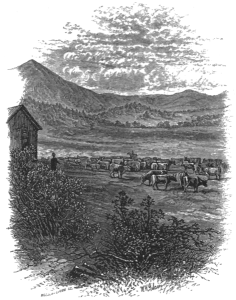
Cattle drive, 1876
The Open Range and the cattle industry were one of the things that gave the Old West a huge boost. Ranching is almost if not more important to the settlement of the West than the discovery of gold and silver. It brought men and money to an unfolding land, gave hopeful young men jobs at a time when they were scarce back East, and helped to settle the frontier. (All, sadly, at the expense of the Native Americans, but that’s a whole other blog post)
Of course, nothing lasts forever, and neither did the Open Range and the era of the cowboy. Believe it or not, one tiny invention changed everything…barbed wire. But we’ll talk about that next time.
If you’re curious, the first book in The Brides of Paradise Ranch series, His Perfect Bride is available now!
(Photos are public domain, courtesy of Wikicommons)
December 27, 2015
Release Day! His Perfect Bride/Corva: The Perfect Bride
Okay, technically Release Day is tomorrow, but I’ll let you in on a little secret. *leans in and whispers* The books are already live on all retailers. That’s right, His Perfect Bride (spicy version) and Corva: The Perfect Bride (sweet version) are up and running…and available for just 99 cents until Friday only! So grab a copy while the price is low! The Brides of Paradise Ranch are here! But right now, you can get started reading…

As the train whistle blew, its shrill sound competing with the squeal of brakes that signaled their final approach to the station in Haskell, Wyoming, Corva Collier clutched her paint box to her chest. This was it. Her heart raced at a thousand beats per minute as she took one final look out the window.
For days, she’d seen nothing but vast, empty space out the train window—first endless stretches of grassland and then wide plains with towering mountains all around. The expansive vistas filled with greens and browns, greys and purples that she’d only ever imagined when she mixed her paints, had captivated her. Every bend in the tracks had shown her a new picture, begged her to open her paints, lay out a canvas and translate the beauty into a captured moment. Of course, it was impossible to paint on a moving train packed with passengers, but it was not impossible to dream.
At last, after darkness and terror that she thought would never end, it was possible to dream.
Another sharp whistle shook her out of her thoughts. The open landscape—dotted here and there with herds of cattle or smaller groups of horses—gave way to a sudden and cheery town. The train lurched to a stop in front of a wooden platform. The wood was still a verdant light brown, suggesting the platform was new.
Corva smiled, telling her shoulders to unbunch. The West was new, Wyoming was new, and Haskell was newer still. Mrs. Breashears had explained this quaint town that had popped up on the whim of rancher Howard Haskell and his family, explained the dire need they had for women to marry the ranch hands and businessmen who had rushed to claim their corner of the booming enterprise. The prospect of settling somewhere far away from Nashville, far away from the nightmare of Atlanta as well, was all the incentive Corva needed. The sweet letter she’d received from Mr. Franklin Haskell, personally inviting her to come to Paradise Ranch to be his bride, was merely icing on the cake of her escape from a life that had felt like death itself.
As soon as the man who sat across the aisle from her stood and walked to the front of the car, Corva dipped into the pocket of her coat and took out a small, round mirror. She checked her hair, turned this way and that to study her face. The bruises that had constantly marred her complexion for most of her life had been gone for a year, but in her heart she expected to see them pop up again at any moment. That didn’t mean she liked what she saw, though. She was nothing but a short, ugly, useless—
No. Those were Uncle Stanley’s words, not hers. She closed her eyes, took a breath, and reminded herself that her uncle was in the past, and his temper was nothing but a few faded scars to her now. As those scars healed, her work—the work of believing in herself—had begun. Believing in herself was so much harder than she’d thought it would be.
“Miss, are you getting off here?” the conductor asked from the front of the car.
Corva cleared her throat. “Yes.” Her voice was no more than a wisp. She stood, slipping the mirror back into her pocket and tightening her grip around the handle of her paint box. She moved to the aisle and twisted and reached for her carpetbag in the rack above the seat.
“I can help you with that.” The conductor strode forward to fetch her bag. It was new and possibly the prettiest thing she owned, aside from the potential in her paints. Mrs. Breashears had purchased it especially for this journey.
“Thank you.” All Corva could offer the kind conductor was a smile, but that seemed to be payment enough. He smiled in return—the way Corva imagined her long-departed father would have smiled at her—and preceded her up the aisle to the door, bag in hand.
As she stepped down onto the platform in Haskell, Corva held her breath. Behind the scent of coal smoke and metal that was the train, she caught a whiff of freshly sawed wood, animal, and beyond that, something cleaner, purer. Men and women in every kind of dress from tailored suits to worn aprons, bustled against the backdrop of a town burgeoning with new life and the fresh colors of whitewash and painted shutters. Her gaze drifted to the mountains in the distance, their caps still snowy, even though it was late spring.
“Now, who’s here to meet you, Miss Collier?” the conductor asked. “It would be irresponsible for me to turn a sweet thing like you off on your own.”
Corva blushed and lowered her head, blinking rapidly. Sweet? Her? No one had ever called her sweet or taken any sort of interest in her at all. She opened her mouth to answer.
“Corva Collier? Miss Corva Collier?”
Corva and the conductor both turned to find a pair of grey-haired ladies in fine dresses with astounding bustles marching toward them.
“Yes, you must be Corva,” the one on the right—slightly older than the other but as vibrant as a young girl—said. “Margaret Breashears said you were a painter.” She nodded to the box Corva carried.
“Is that what that is?” the younger of the two said. She looked as full of life as a woman half her age. The word “trouble” popped to Corva’s mind as she studied the two of them together.
“Yes,” the first one said. “It’s a paint box.”
“Oh, how lovely.”
“I’m Virginia Piedmont.” The first woman thrust out her hand for Corva to shake.
“And I’m Josephine Evans.” The second one followed suit.
It was then that Corva realized her mouth still hung open from the comment she’d been about to make to the conductor. She snapped it shut, blushing furiously, shifted her paint box to her left hand, then shook hands with both women, adding a quiet, “How do you do?” in her soft, Georgia accent.
“Well, now that you’re here,” Virginia said, beaming with satisfaction. She nodded to the carpetbag that the amused conductor still carried. “Is that all you brought with you?”
“Oh, no.” Corva’s heart leapt back to her throat as she glanced from the women to the train, and then pleadingly at the conductor.
The good man sensed her thoughts enough to say, “I’ll fetch your crates, Miss Collier. Don’t you worry.”
“Crates?” Josephine asked as she reached to take the carpetbag from the conductor. “What crates?”
“You’ll see.” The conductor gave her a saucy wink, then hurried along to the last train car.
“I brought a few paintings with me,” Corva explained. “I…I hope you don’t mind.”
“Mind?” Josephine laughed. “Why would I mind? That sounds delightful.”
“It’s really up to Franklin to mind,” Virginia said.
“You’re…you’re his aunt, aren’t you?” Corva asked. “At least, he mentioned an Aunt Virginia who was helping bring me here in his letter.”
“Yes, dear.” Virginia beamed. “That’s me. It was nice of Franklin to remember me.”
Josephine sucked in a breath and nodded, as if remembering something herself. Then the two women turned in unison to look behind them.
Corva looked as well, and pressed a hand to her stomach. There, standing just beyond the edge of the platform on the board sidewalk that stretched away down the town’s main street, stood a man in a suit. Corva felt her cheeks go pink and her skin tingle with excitement and apprehension. The man was startlingly handsome, with dark hair and eyes so blue she could see them across the distance. He was clean-shaven and well-groomed, and the suit he wore was finely made and tailored to fit him perfectly. But what drew her attention were the iron braces on his legs—like twin cages—and the ivory-topped cane that he leaned against.
Franklin Haskell. Her groom.
There you go! Ready to read more? You can start reading the sweet version (nothing inappropriate), Corva: The Perfect Bride exclusively at Amazon by clicking here.
For the spicy version (scenes! It has scenes!) His Perfect Bride, click here to be taken to Amazon, click right here to be taken to iBooks, and click on this link to go to Barnes & Noble to read on your Nook.
I hope you all enjoy this fabulous new series!
December 23, 2015
Western Wednesday – Sod Houses on the Frontier
Okay, I confess that I actually wrote this blog post almost two years ago and am simply reposting it now. But I think a lot of people might not have seen it, and it’s about one of my favorite things in the Old West. So as part of my effort to bring you slices of Western history every Wednesday in the new year, I give you…sod houses!
 People who live in glass houses shouldn’t throw stones. People who lived in sod houses, however, could throw just about anything.
People who live in glass houses shouldn’t throw stones. People who lived in sod houses, however, could throw just about anything.
I happen to really like sod houses. I think my first brush with this particularly ingenious form of architecture was through reading the Little House on the Prairie series. I thought it was just awesome that people could make houses out of the dirt itself and could build them right into hills if they wanted to. I guess I’ve always been a hobbit at heart.
My appreciation for sod houses, however, grew as I learned more about the settling of the American frontier. In the early days of the Old West, settlers moving into the vast new lands opened by the explorations after the Louisiana Purchase had only the most basic materials to work with. In areas with forests, this wasn’t a problem. Cut the trees down, build log cabins and other wood frame houses, end of story. But across the prairie, were trees were scarce but the land was ripe for farming, a different kind of house was needed.

Detail of sod house construction – courtesy of Greg Willis, Wikicommons
Sod houses were surprisingly strong. They were the ideal form of shelter in areas where the winds whipped and fires could spread like, well, wildfire. Sod “bricks” were cut from the virgin soil as part of the process of cultivating the land for planting. These bricks would be built into walls, like clay bricks, and a roof would be put on top. It sounds so simple. It was simple. It was also genius.
The sod was still living when it was first built into walls, and the roots of the grass had just enough time to grow the bricks together before it dried. The result was a fortress of a house…complete with insects and other “wildlife” growing in it. We are so deeply concerned about building “green” houses now, but these sod houses put our modern green architecture to shame.
Of course, with a sod house came sod problems. The walls living in more ways than one. Bugs, mice, and other little critters were just as cozy and happy within the walls as people were. If you lived in a sod house, you were never truly alone! Constant dirt was another problem. Unlike fired bricks, dried sod tended to “shed” over time. That’s not to say that the walls would crumble. The roots of the grass that had grown in the sod before it was made into bricks saw to that. But dirt and dust was a problem.

Dowse sod house, Comstock, NE – built in 1900
For many frontiersmen, it was a problem worth having. The solidness of a sod house was perfect for keeping out the cold. The sharp winds of the prairie didn’t cut through the walls the way it did with wooden houses. Better still, sod houses were fireproof. In the era before electricity, when one upset lamp could burn through a family’s livelihood, sod houses were the best insurance you could have.
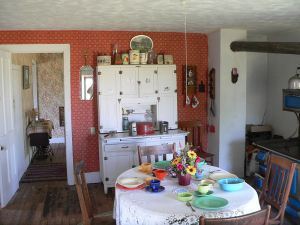
Interior of the Dowse sod house. Not too shabby!
Believe it or not, they were also incredibly durable. One book I read talked about a couple continuing to live in their two-story sod house that had been built in the 1850s well into the 20th century and their old age. These color photographs of the interior and exterior of a sod house, the Dowse sod house in Comstock, Nebraska, were taken in 2006 (thank you Wikicommons!), but the house was built in 1900. Still standing!
Yep, if I had lived in the mid-19th century and found myself settling on the prairie, I think I would have been happy to live in a sod house. And that’s about it, really. Just another interesting tidbit of life in the Old West that I find fascinating.



